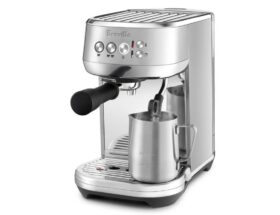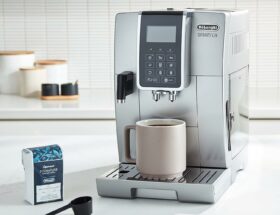
Coffee Without the Jitters: How to Minimize Caffeine Side Effects
While coffee is a beloved beverage for many, it can sometimes cause unwanted side effects like jitters or nervousness. In this blog post, we will explore practical strategies to reduce these effects and enjoy your coffee without feeling wired or anxious. From adjusting your coffee strength to choosing the right type of beans, we will provide six helpful tips to minimize caffeine side effects and enhance your coffee drinking experience. So, if you’re ready to enjoy the perfect cup of coffee without the jitters, keep reading!
Table of Contents
Coffee Jitters and Caffeine Side Effects
Coffee is a popular beverage enjoyed by millions of people around the world. The caffeine found in coffee is known to provide an energy boost and increase alertness. However, for some individuals, consuming coffee can lead to unwanted side effects, such as jitters, nervousness, or even sleep disturbances. These effects can be attributed to the stimulatory effects of caffeine on the central nervous system.
It’s essential to find a balance between enjoying a cup of coffee and managing these side effects. In this blog post, we will explore six practical strategies that can help minimize coffee jitters and other caffeine-related effects. Whether you’re looking to reduce your caffeine intake or find alternative options, we’ve got you covered. Let’s dive in and learn how to enjoy coffee without the jitters!
Enjoying Coffee Without the Jitters: How to Minimize Caffeine Side Effects
While coffee is a beloved beverage for many, it can sometimes cause unwanted side effects like jitters or nervousness. If you experience these symptoms after your morning cup of joe, don’t worry! In this blog post, we will delve into six practical strategies to reduce these effects and help you enjoy your coffee without the jitters.
Adjusting Coffee Strength
One effective way to minimize caffeine side effects is by adjusting the strength of your coffee. If you find yourself getting jittery after drinking a regular cup of coffee, consider reducing the amount of coffee grounds you use when brewing. Experiment with different ratios of coffee to water until you find a good balance that works for you. This way, you can still savor the flavor without experiencing the overwhelming effects of caffeine.
Choosing the Right Beans
Another way to enjoy coffee without the jitters is by selecting the right type of beans. Look for low-acid coffee beans, as high levels of acidity can contribute to increased jitters. Low-acid beans are gentler on the stomach and tend to have a smoother taste. Additionally, opting for decaf coffee options can significantly reduce caffeine side effects, as decaffeinated coffee contains only a fraction of the caffeine found in regular coffee.
Managing Caffeine Intake
To minimize caffeine side effects, it’s essential to be mindful of your overall caffeine intake throughout the day. Limiting your consumption to a specific amount per day can help reduce jitters. Consider tracking your caffeine intake using a mobile app or keeping a caffeine diary to better manage your consumption. Remember that caffeine can be found not only in coffee but also in other beverages like tea and energy drinks.
Drinking Water
Staying hydrated is crucial for minimizing the negative effects of caffeine. Coffee acts as a diuretic, which can lead to dehydration if not accompanied by adequate water intake. Dehydration can exacerbate jitters and other caffeine-related symptoms. Aim to drink a glass of water before and after your coffee to stay properly hydrated and reduce the likelihood of experiencing unwanted side effects.
Pairing with Food
Having a snack or a meal while enjoying your coffee can also help minimize caffeine side effects. Eating something before or after drinking coffee can help slow down the absorption of caffeine into your system, reducing its impact and potential jitters. Opt for a balanced breakfast or a small snack containing protein and healthy fats to provide a steady release of energy and counteract the stimulating effects of caffeine.
Experimenting with Brewing Methods
Lastly, consider experimenting with different brewing methods to find one that produces a cup of coffee with lower caffeine content. For example, using a French press tends to result in a stronger brew compared to a drip coffee maker. By testing out various methods, you can find one that suits your preferences and minimizes the jitters.
Pay close attention to how your body responds to various coffee types, brewing methods, and caffeine quantities. If you experience significant jitters or adverse effects, don't hesitate to adjust your coffee habits. For those with health concerns or uncertainties, seeking guidance from a healthcare professional ensures a balanced and enjoyable coffee experience.
Step by Step Guide: Enjoying Coffee Without the Jitters
Step 1: Adjust Your Coffee Strength
One effective way to reduce coffee jitters is to adjust the strength of your coffee. Here’s how you can do it:
- Start by using less coffee grounds or reducing the brewing time to make a milder cup of coffee. This will result in less caffeine being extracted.
- Experiment with different brewing methods, such as pour-over or French press, as they can produce a smoother and less intense cup of coffee.
- Consider switching to a coffee maker that offers strength settings, allowing you to customize the strength of each brew.
Step 2: Opt for Low-Acid Coffee Beans
High acidity in coffee can contribute to the jitters and other digestive issues. Follow these suggestions to choose low-acid coffee beans:
- Look for coffee beans labeled as “low-acid” or “acid-neutral” as they are specifically processed to minimize acidity.
- Try coffee beans from regions known for producing low-acid coffee, such as Brazil or Sumatra.
- Consider cold brew coffee, as the brewing process naturally reduces acidity levels.
Step 3: Consider Decaf Options
Decaf coffee is an excellent choice if you want to enjoy the flavor of coffee without the jitters. Here are some decaf options to explore:
- Look for decaf coffee that has been processed through Swiss Water Method or the CO2 method, which are known to retain more flavor.
- Experiment with decaf blends or single-origin decaf coffee to find the one that suits your taste preferences.
- Consider trying herbal teas or caffeine-free alternatives to satisfy your warm beverage cravings without the caffeine.
Step 4: Monitor Your Caffeine Intake
Keeping track of your caffeine consumption can help you manage its effects better. Follow these suggestions:
- Be aware of the caffeine content in each cup of coffee you drink. Light to medium roast coffees generally have slightly less caffeine compared to dark roasts.
- Limit your overall caffeine intake by substituting one or two cups of coffee with other beverages like herbal tea or decaf options.
- Avoid consuming coffee late in the day to prevent interference with your sleep patterns.
Step 5: Stay Hydrated
Dehydration can worsen the jitters and other caffeine side effects. Stay hydrated with these tips:
- Drink a glass of water before or after each cup of coffee to stay hydrated.
- Consider alternating between coffee and water throughout the day to maintain a balance.
- Increase your overall water intake to counteract the dehydrating effects of caffeine.
Step 6: Listen to Your Body
Everyone’s caffeine tolerance is different, so it’s essential to listen to your body’s signals. Here’s what to pay attention to:
- Notice how your body reacts to different coffee types, brewing methods, and caffeine amounts. Make adjustments accordingly.
- Consider reducing or eliminating coffee if you notice severe jitters or other undesirable side effects.
- Consult with a healthcare professional if you have underlying health conditions or concerns about your caffeine consumption.
Wrap Up
In conclusion, by implementing these six strategies, you can minimize the unwanted side effects of caffeine and enjoy your coffee without the jitters. Remember to adjust your coffee strength, choose low-acid coffee beans or decaf options, and be mindful of your overall caffeine consumption. Experiment with different brewing methods and find what works best for you. Whether you’re a coffee lover or someone who wants to enjoy the taste without the jitters, these strategies will help you find the perfect balance. So go ahead, pour yourself a cup of coffee, and savor every sip!
If you have any questions or would like to share your experiences with reducing coffee jitters, feel free to leave a comment below. I would love to hear from you.









